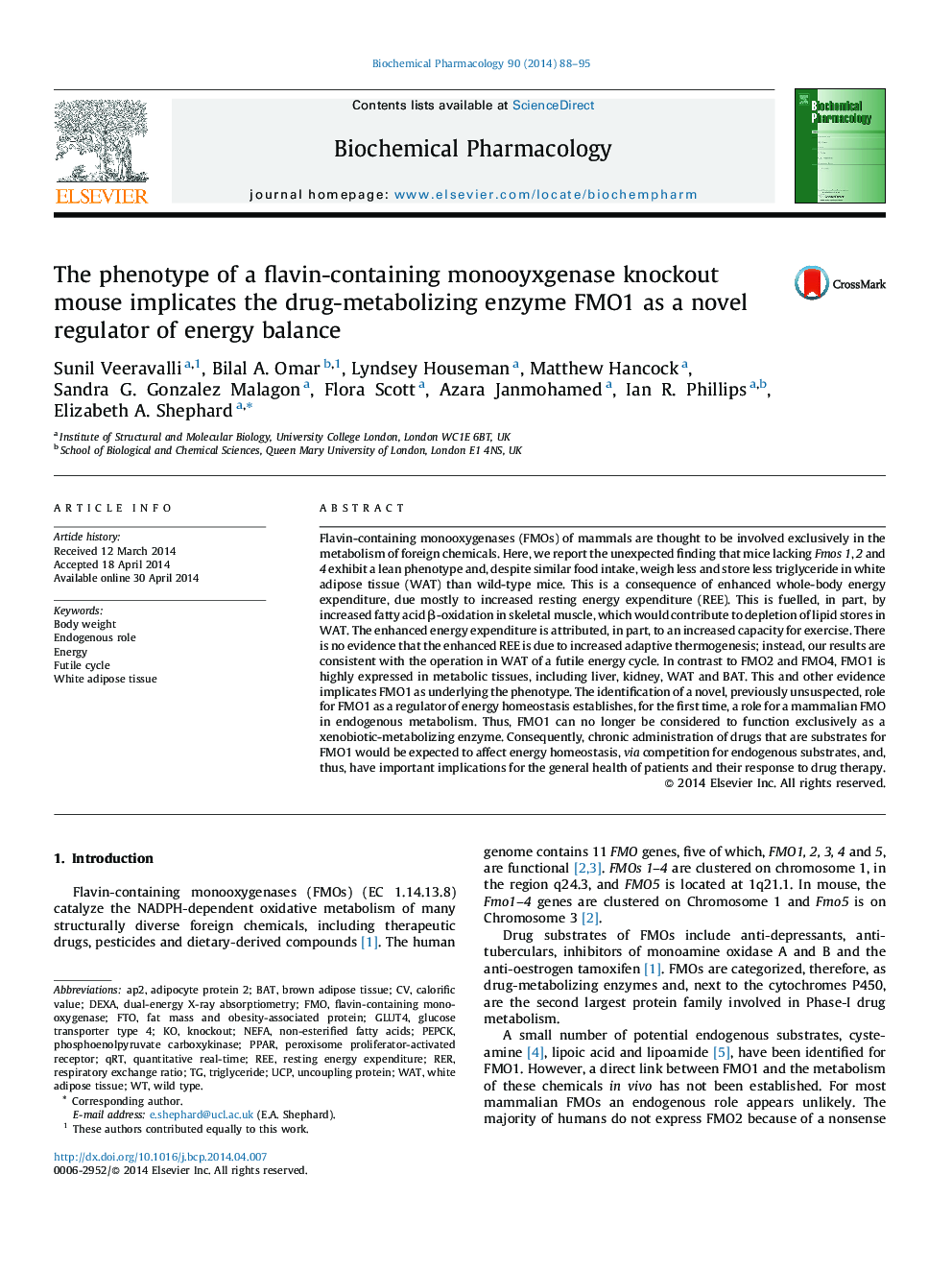| Article ID | Journal | Published Year | Pages | File Type |
|---|---|---|---|---|
| 2512336 | Biochemical Pharmacology | 2014 | 8 Pages |
Flavin-containing monooxygenases (FMOs) of mammals are thought to be involved exclusively in the metabolism of foreign chemicals. Here, we report the unexpected finding that mice lacking Fmos 1, 2 and 4 exhibit a lean phenotype and, despite similar food intake, weigh less and store less triglyceride in white adipose tissue (WAT) than wild-type mice. This is a consequence of enhanced whole-body energy expenditure, due mostly to increased resting energy expenditure (REE). This is fuelled, in part, by increased fatty acid β-oxidation in skeletal muscle, which would contribute to depletion of lipid stores in WAT. The enhanced energy expenditure is attributed, in part, to an increased capacity for exercise. There is no evidence that the enhanced REE is due to increased adaptive thermogenesis; instead, our results are consistent with the operation in WAT of a futile energy cycle. In contrast to FMO2 and FMO4, FMO1 is highly expressed in metabolic tissues, including liver, kidney, WAT and BAT. This and other evidence implicates FMO1 as underlying the phenotype. The identification of a novel, previously unsuspected, role for FMO1 as a regulator of energy homeostasis establishes, for the first time, a role for a mammalian FMO in endogenous metabolism. Thus, FMO1 can no longer be considered to function exclusively as a xenobiotic-metabolizing enzyme. Consequently, chronic administration of drugs that are substrates for FMO1 would be expected to affect energy homeostasis, via competition for endogenous substrates, and, thus, have important implications for the general health of patients and their response to drug therapy.
Graphical abstractFigure optionsDownload full-size imageDownload as PowerPoint slide
